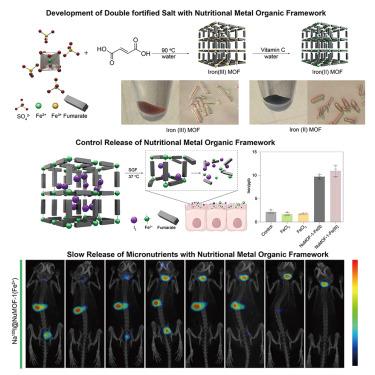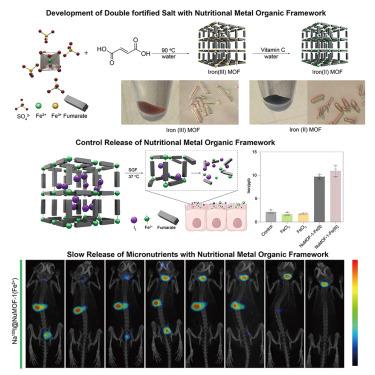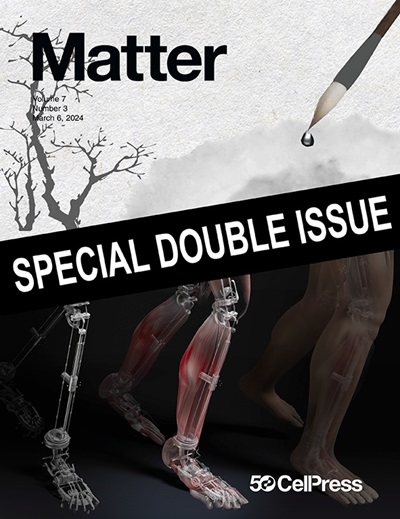黑色营养金属有机骨架作为食品强化剂
IF 17.5
1区 材料科学
Q1 MATERIALS SCIENCE, MULTIDISCIPLINARY
引用次数: 0
摘要
由于铁和碘的不相容性,用铁和碘强化盐仍然是一个全球性的挑战。我们报道了一种新一代双强化盐,它具有增强的生物利用度、简化的加工过程和更好的抗降解性,它使用营养金属有机框架(NuMOFs),可以实现元素碘稳定,而不转化为碘化物或碘酸盐,显著降低了制造成本并简化了工艺。此外,我们还开发了一种简单且具有成本效益的Fe(II) MOF合成策略,通过在合成过程中引入维生素C来增强铁的吸收,从而消除了昂贵的能量密集型缺氧条件的需要。体外和小鼠研究表明,NuMOFs在煮沸、烤箱加热和光照下可显著增加碘的保留,延长营养物质在消化道的停留时间,提高整体铁吸收效率。这些发现证明了MOFs在开发有效和可持续的食品强化技术以解决全球微量营养素缺乏问题方面的潜力。本文章由计算机程序翻译,如有差异,请以英文原文为准。


Ferrous nutritional metal-organic framework as food fortificant
Fortifying salt with both iron and iodine remains a global challenge due to their incompatibility. We report a next-generation dual-fortified salt with enhanced bioavailability, simplified processing, and improved resistance to degradation, which, using nutrient metal-organic frameworks (NuMOFs), could realize elemental iodine stabilization without converting to iodide or iodate, significantly reducing the manufacturing cost and simplifying the process. In addition, we also developed a simple and cost-effective Fe(II) MOF synthesis strategy to enhance iron absorption by introducing vitamin C during synthesis, eliminating the need for expensive, energy-intensive anoxic conditions. In vitro and mouse studies demonstrate that NuMOFs retain significantly more iodine during boiling, oven heating, and light exposure, extend nutrient residence time in the digestive tract, and improve overall iron absorption efficiency. These findings demonstrate the potential of MOFs in developing efficient and sustainable food-fortification technologies to address global micronutrient deficiencies.
求助全文
通过发布文献求助,成功后即可免费获取论文全文。
去求助
来源期刊

Matter
MATERIALS SCIENCE, MULTIDISCIPLINARY-
CiteScore
26.30
自引率
2.60%
发文量
367
期刊介绍:
Matter, a monthly journal affiliated with Cell, spans the broad field of materials science from nano to macro levels,covering fundamentals to applications. Embracing groundbreaking technologies,it includes full-length research articles,reviews, perspectives,previews, opinions, personnel stories, and general editorial content.
Matter aims to be the primary resource for researchers in academia and industry, inspiring the next generation of materials scientists.
 求助内容:
求助内容: 应助结果提醒方式:
应助结果提醒方式:


